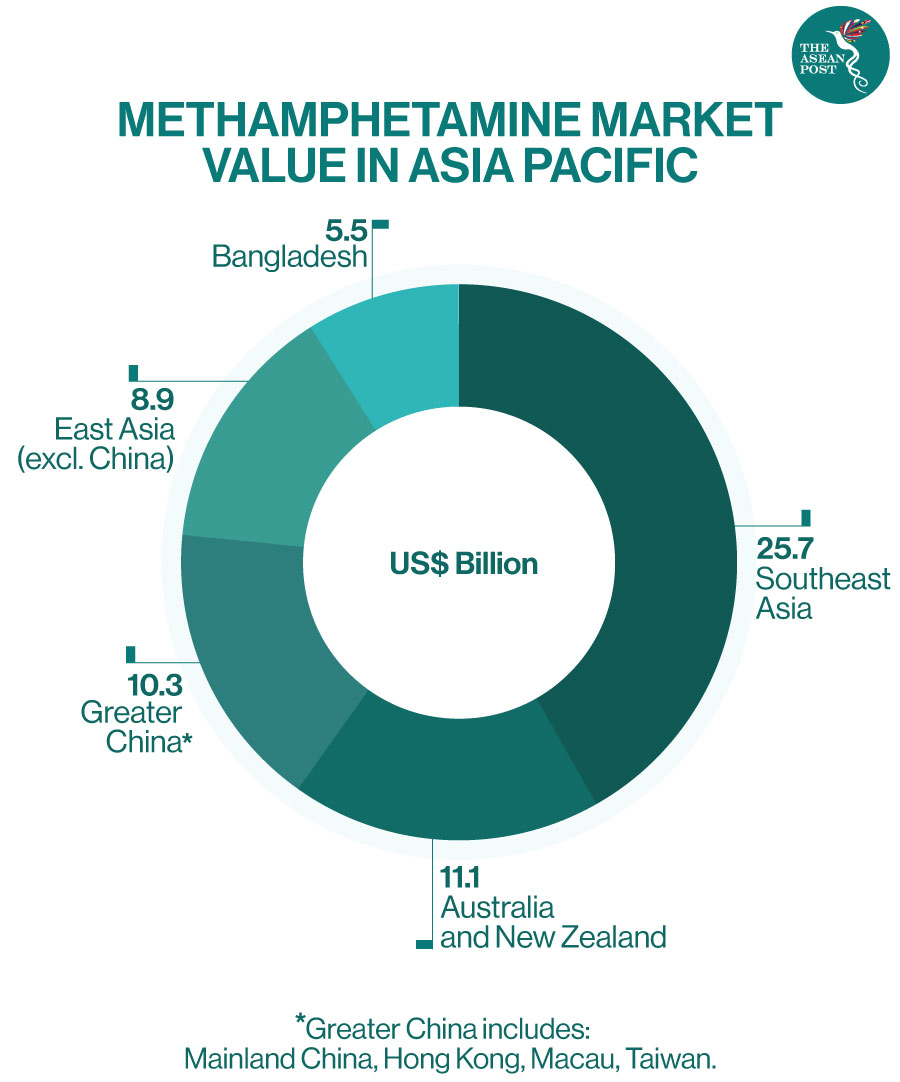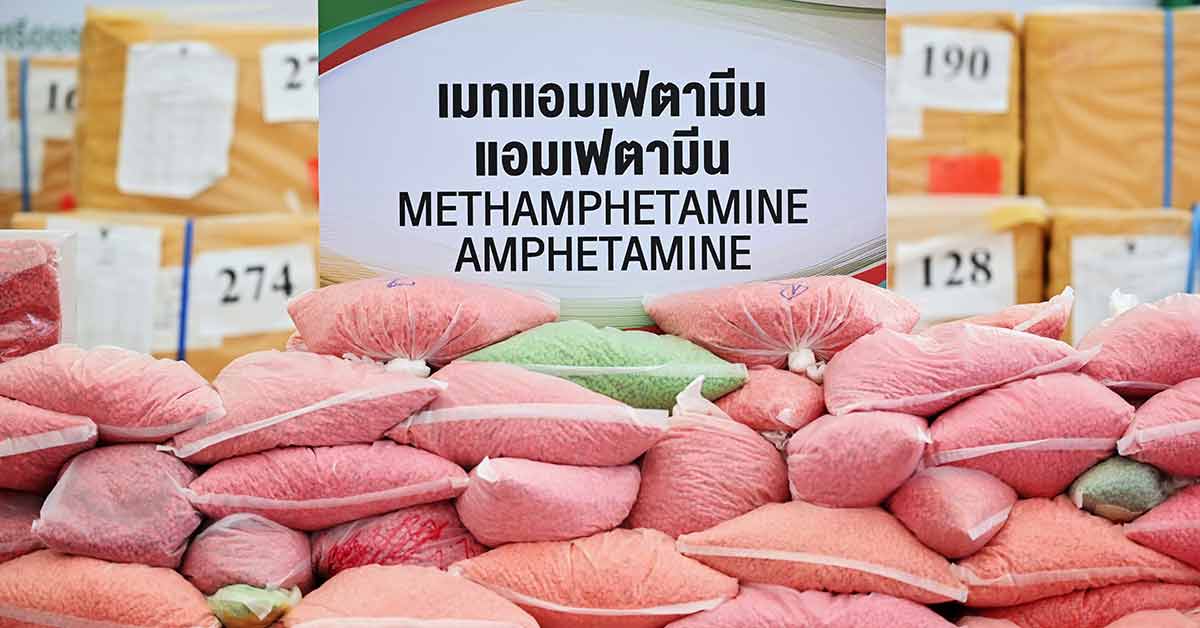According to the United Nations (UN), the market for synthetic drugs, including methamphetamine (meth), continues to grow in most ASEAN member states and across Asia despite the COVID-19 pandemic.
"While the world has shifted its attention to the COVID-19 pandemic, all indications are that production and trafficking of synthetic drugs and chemicals continue at record levels in the region," said Jeremy Douglas of the UN Office on Drugs and Crime (UNODC).
Drug trade in the Golden Triangle – a region where the borders of Myanmar, Lao and Thailand meet – is booming thanks to an increase in transnational organised crime groups operating, manufacturing and trafficking meth and other drugs in the region, stated the UNODC.
Just last year, the organisation released a report titled, ‘Synthetic Drugs in East and South-East Asia: Trends and Patterns of Amphetamine-type Stimulants and New Psychoactive Substances’. The report noted that substantial quantities of precursor chemicals (chemicals used in the illegal manufacture of narcotic drugs) for meth have been continuously diverted and trafficked within the region.
Known as an opium and heroin production hub since the 1970s, the lawless 950,000 square kilometre Golden Triangle region lost its notoriety as the global centre for manufacturing drugs to Afghanistan in the early 21st century.
However, drug producers have since shifted their attention to meth and other synthetic drugs to become the world’s leading exporter – with most of the trade centred around Myanmar’s Shan State.
In 2017, seizures of meth in the region came in at 82 tons, which was a record at the time. However, in 2018 – confirmed by countries in the region mostly by the third quarter of the year – showed that the amount seized had increased to 116 tons. This is an alarming 210 percent increase from five years ago.
The report took into account seizures from the 10 ASEAN member states and China (including Hong Kong), Japan and South Korea.
Although the increase in meth seizures has been significant across the region, it is more pronounced in the Mekong region – Cambodia, south-west China, Lao PDR, Myanmar, Thailand and Vietnam. Home to a population of 300 million, the meth trade there is estimated to be worth over US$40 billion a year.
The 2019 UNODC report states that there has been a strong shift in the drug market in East and Southeast Asia – from opiates to meth. With the exception of Vietnam, all 13 countries in the region have reported meth as their primary drug of concern in 2018. A decade ago, only five countries reported that to be the case. There has also been a 40 percent decrease in the estimated amount of opium produced in Myanmar from 2013 to 2018.

Decrease In Prices
Despite the increase in seizures, meth prices have been decreasing in recent years which might be indicative of an oversupply. In some states in Myanmar, yaba – pills created by mixing meth with various adulterants – range from around US$0.10 to US$0.30 each.
In Vietnam, authorities in 2017 reported a price of US$8,000 for one kilogram (kg) of meth thought to have originated from the Golden Triangle; down from the US$13,500 in 2016.
Also surprising is that the decrease in price is happening in the face of increased raids on clandestine meth laboratories.
A record 526 clandestine meth laboratories were dismantled in East and Southeast Asia in 2015 and the number has been decreasing every year since then with the preliminary figure for 2018 representing a 75 percent decrease from 2015.
However, the record number of seizures combined with the low market price for these drugs may point toward the presence of undetected large-scale clandestine manufacturing facilities or clusters of small-scale manufacturing facilities.
With regional connectivity initiatives such as the ASEAN Economic Community and Greater Mekong Sub-Region Transport Master Plan including infrastructure upgrades and other programs to promote more efficient movement between borders, it is vital that borders are safeguarded from illicit trafficking.
Key to ensuring this are partnerships such as the one which Thailand and the UNODC initiated last year to advance border management.
“Border management needs to be part of the solution to transnational challenges the region is faced with," Suriya Chindawongse, Director General of the ASEAN Department of the Thailand Ministry of Foreign Affairs stated on the UNODC’s website.
Related Articles:
